Succeeded by Okuma Shigenobu Party Rikken Seiyukai | Name Ito Hirobumi | |
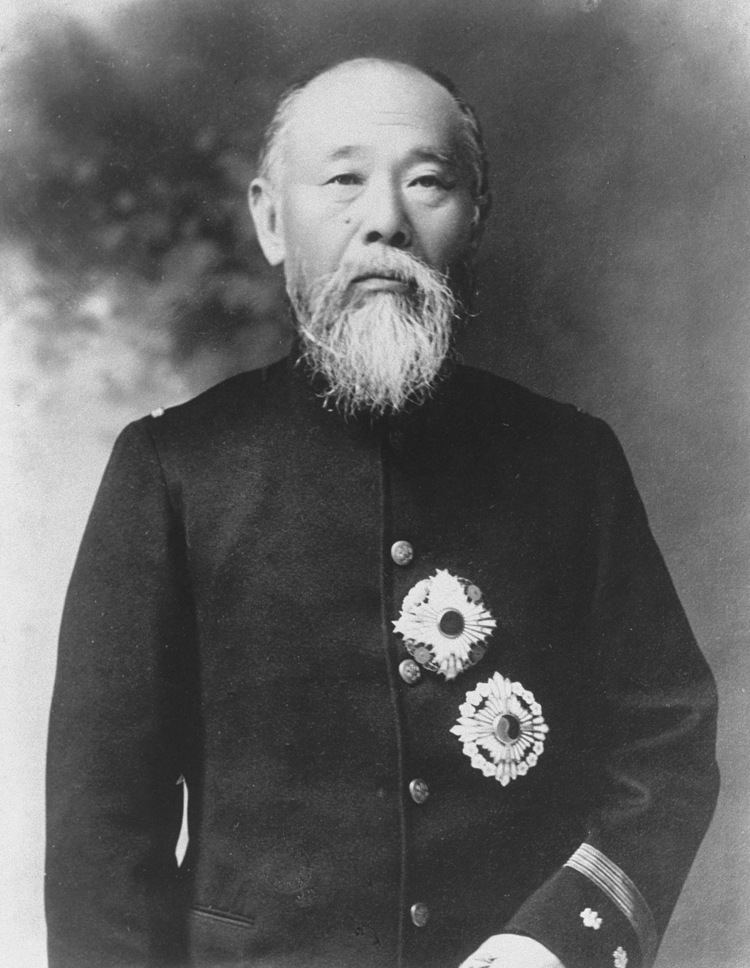 | ||
Books Commentaries on the Constitution of the Empire of Japan Similar People An Jung‑geun, Yamagata Aritomo, Okubo Toshimichi, Takasugi Shinsaku, Okuma Shigenobu | ||
Japan history mystery ito hirobumi statue
Prince Itō Hirobumi (伊藤 博文, October 16, 1841 – October 26, 1909, born Hayashi Risuke and also known as Hirofumi, Hakubun and briefly during his youth Itō Shunsuke) was a Japanese statesman and genrō. A London-educated samurai of the Chōshū Domain and an influential figure in the early Meiji Restoration government, he chaired the bureau which drafted the Meiji Constitution in the 1880s. Looking to the West for legal inspiration, Itō rejected the United States Constitution as too liberal and the Spanish Restoration as too despotic before ultimately drawing on the British and German models, especially the Prussian Constitution of 1850. Dissatisfied with the prominent role of Christianity in European legal traditions, he substituted references to the more traditionally Japanese concept of kokutai or "national polity", which became the constitutional justification for imperial authority.
Contents
- Japan history mystery ito hirobumi statue
- the first prime minister hirobumi ito birthplace
- Early years
- Political career
- As Prime Minister
- As Resident General of Korea
- Assassination
- In Japan
- In Korea
- Genealogy
- Honours
- Japanese
- Foreign
- References
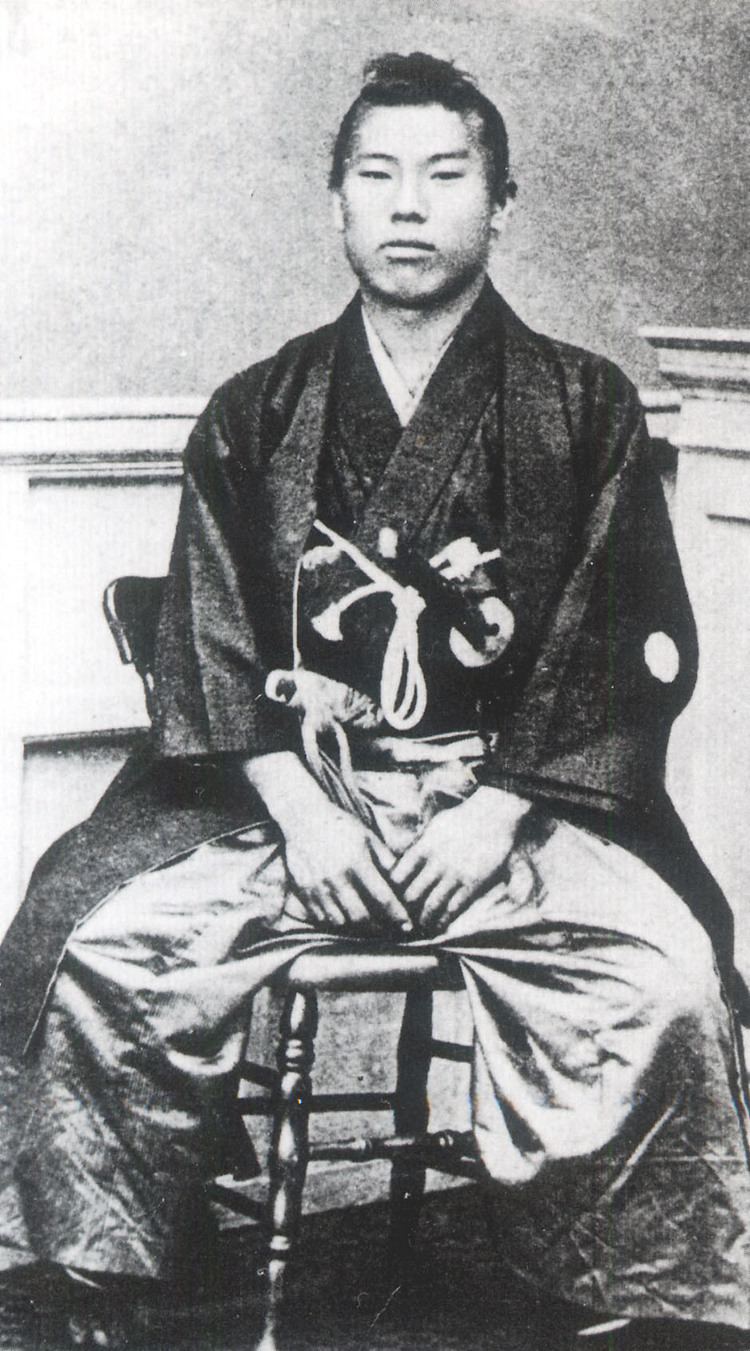
In 1885 he became Japan's first Prime Minister, an office his constitutional bureau had introduced. He went on to hold the position four times, becoming one of the longest serving PMs in Japanese history, and wielded considerable power even out of office as the occasional head of Emperor Meiji's Privy Council. A monarchist, Itō favoured a large, bureaucratic government and opposed the formation of political parties. His third government was ended by the consolidation of the opposition into the Kenseitō party in 1898, prompting him to found the Rikken Seiyūkai in response. He resigned his fourth and final ministry in 1901 after growing weary of party politics, but served as head of the Privy Council twice more before his death.
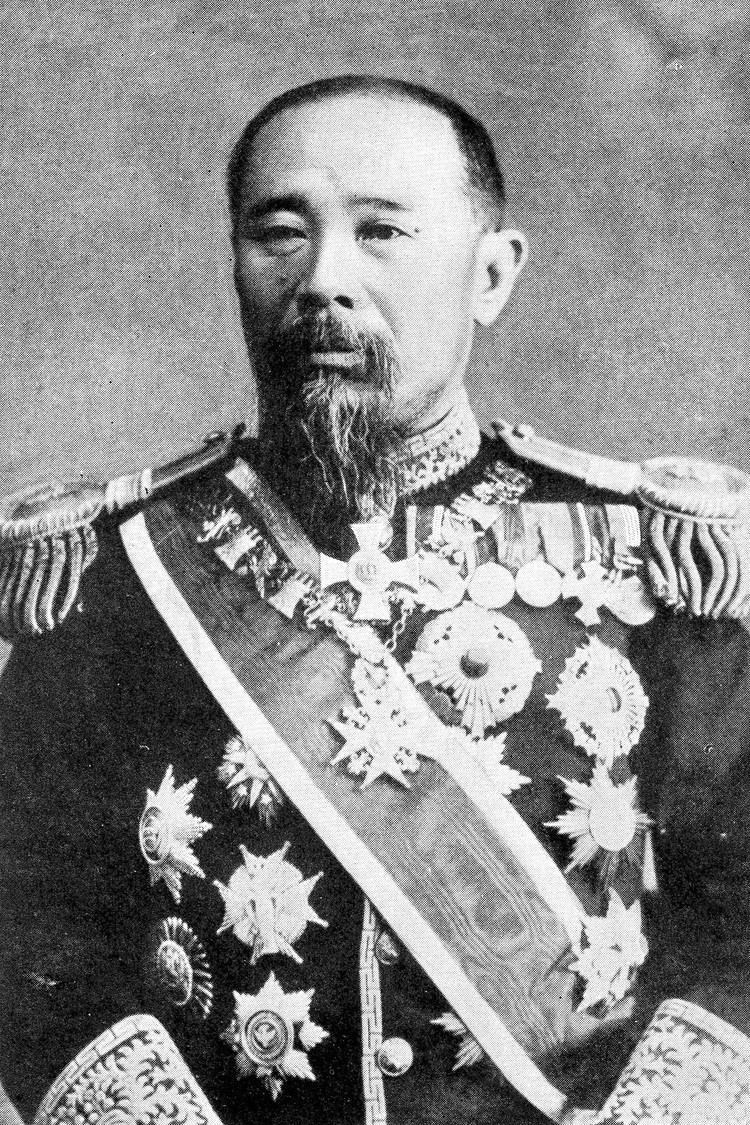
Itō's foreign policy was ambitious. He strengthened diplomatic ties with Western powers including Germany, the United States and especially the United Kingdom. In Asia he oversaw the First Sino-Japanese War and negotiated Chinese surrender on terms aggressively favourable to Japan, including the annexation of Taiwan and the release of Korea from the tribute system. Itō sought to avoid a Russo-Japanese War through the policy of Man-Kan kōkan – surrendering Manchuria to the Russian sphere of influence in exchange for the acceptance of Japanese hegemony in Korea. A diplomatic tour of the United States and Europe brought him to Saint Petersburg in November 1901, where he was unable to find compromise on this matter with Russian authorities. Soon the government of Katsura Tarō elected to abandon the pursuit of Man-Kan kōkan, and tensions with Russia continued to escalate towards war.
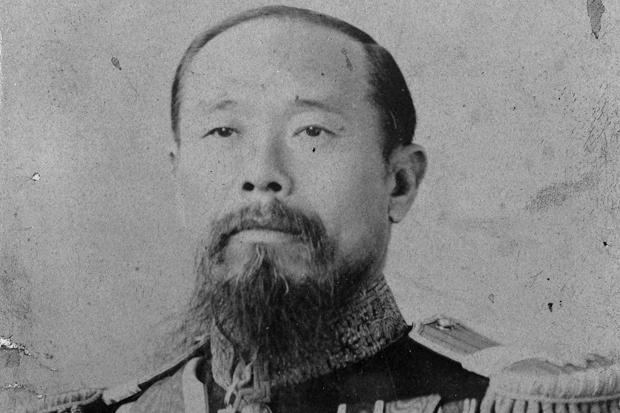
The Japan–Korea Treaty of 1905 made Itō the first Japanese Resident-General of Korea. He supported the sovereignty of the indigenous Joseon monarchy as a protectorate under Japan, and in 1909 was forced to resign his position by the increasingly powerful Imperial Japanese Army, which instead favoured the total annexation of Korea. Four months later, Itō was assassinated by Korean nationalist An Jung-geun in Manchuria. His death accelerated the annexation both he and his assassin had opposed; the process was formalised by another treaty the following year. Through his daughter Ikuko, Itō was the father-in-law of politician, intellectual and author Suematsu Kenchō.
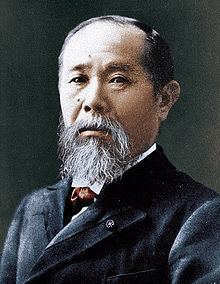
the first prime minister hirobumi ito birthplace
Early years

Itō was born as Hayashi Risuke. His father Hayashi Jūzō was the adopted son of Mizui Buhei who was an adopted son of Itō Yaemon's family, a lower-ranked samurai from Hagi in Chōshū Domain (present-day Yamaguchi Prefecture). Mizui Buhei was renamed Itō Naoemon. Mizui Jūzō took the name Itō Jūzō, and Hayashi Risuke was renamed to Itō Shunsuke at first, then Itō Hirobumi. He was a student of Yoshida Shōin at the Shōka Sonjuku and later joined the Sonnō jōi movement ("to revere the Emperor and expel the barbarians"), together with Kido Takayoshi. Itō was chosen as one of the Chōshū Five who studied at University College London in 1863, and the experience in Great Britain convinced him Japan needed to adopt Western ways.

In 1864, Itō returned to Japan with fellow student Inoue Kaoru to attempt to warn Chōshū Domain against going to war with the foreign powers (the Bombardment of Shimonoseki) over the right of passage through the Straits of Shimonoseki. At that time, he met Ernest Satow for the first time, later a lifelong friend.
Political career
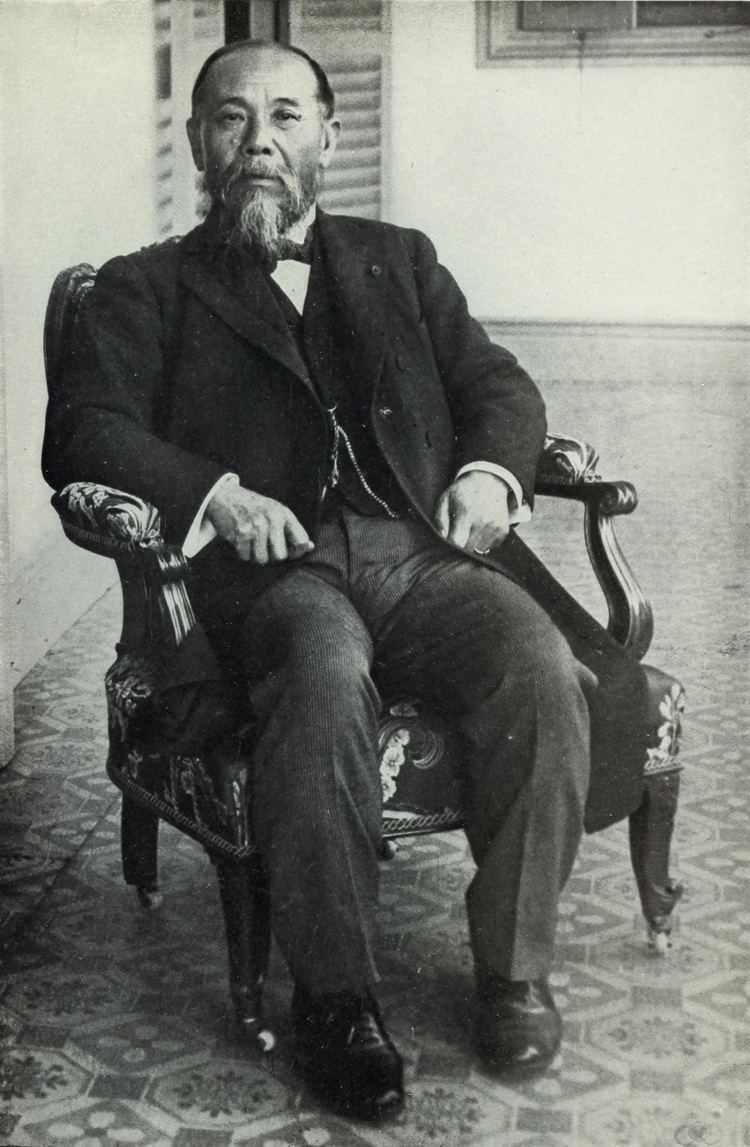
After the Meiji Restoration of 1868, Itō was appointed governor of Hyōgo Prefecture, junior councilor for Foreign Affairs, and sent to the United States in 1870 to study Western currency systems. Returning to Japan in 1871, he established Japan's taxation system. Later that year, he was sent on the Iwakura Mission around the world as vice-envoy extraordinary, during which he won the confidence of Ōkubo Toshimichi, one of the leaders of the Meiji government.

In 1873, Itō was made a full councilor, Minister of Public Works, and in 1875 chairman of the first Assembly of Prefectural Governors. He participated in the Osaka Conference of 1875. After Ōkubo's assassination, he took over the post of Home Minister and secured a central position in the Meiji government. In 1881 he urged Ōkuma Shigenobu to resign, leaving himself in unchallenged control.

Itō went to Europe in 1882 to study the constitutions of those countries, spending nearly 18 months away from Japan. While working on a constitution for Japan, he also wrote the first Imperial Household Law and established the Japanese peerage system (kazoku) in 1884.
In 1885, he negotiated the Convention of Tientsin with Li Hongzhang, normalizing Japan's diplomatic relations with Qing Dynasty China.
As Prime Minister
In 1885, based on European ideas, Itō established a cabinet system of government, replacing the Daijō-kan as the decision-making state organization, and on December 22, 1885, he became the first prime minister of Japan.
On April 30, 1888, Itō resigned as prime minister, but headed the new Privy Council to maintain power behind-the-scenes. In 1889, he also became the first genrō. The Meiji Constitution was promulgated in February 1889. He had added to it the references to the kokutai or "national polity" as the justification of the emperor's authority through his divine descent and the unbroken line of emperors, and the unique relationship between subject and sovereign. This stemmed from his rejection of some European notions as unfit for Japan, as they stemmed from European constitutional practice and Christianity.
He remained a powerful force while Kuroda Kiyotaka and Yamagata Aritomo, his political nemeses, were prime ministers.
During Itō's second term as prime minister (August 8, 1892 – August 31, 1896), he supported the First Sino-Japanese War and negotiated the Treaty of Shimonoseki in March 1895 with his ailing foreign minister Mutsu Munemitsu. In the Anglo-Japanese Treaty of Commerce and Navigation of 1894, he succeeded in removing some of the onerous unequal treaty clauses that had plagued Japanese foreign relations since the start of the Meiji period.
During Itō's third term as prime minister (January 12 – June 30, 1898), he encountered problems with party politics. Both the Jiyūtō and the Shimpotō opposed his proposed new land taxes, and in retaliation, Itō dissolved the Diet and called for new elections. As a result, both parties merged into the Kenseitō, won a majority of the seats, and forced Itō to resign. This lesson taught Itō the need for a pro-government political party, so he organized the Rikken Seiyūkai(Constitutional Association of Political Friendship) in 1900. Itō's womanizing was a popular theme in editorial cartoons and in parodies by contemporary comedians, and was used by his political enemies in their campaign against him.
Itō returned to office as prime minister for a fourth term from October 19, 1900, to May 10, 1901, this time facing political opposition from the House of Peers. Weary of political back-stabbing, he resigned in 1901, but remained as head of the Privy Council as the premiership alternated between Saionji Kinmochi and Katsura Tarō.
Toward the end of August 1901, Itō announced his intention of visiting the United States to recuperate. This turned into a long journey in the course of which he visited the major cities of the United States and Europe, setting off from Yokohama on September 18, traveling through the U.S. to New York City (Itō received an honorary doctorate LL.D. from Yale University in late October), from which he sailed to Boulogne, reaching Paris on November 4. On November 25, he reached Saint Petersburg, having been asked by the new prime minister, Katsura Tarō, to sound out the Russians, entirely unofficially, on their intentions in the Far East. Japan hoped to achieve what it called Man-Kan kōkan, the exchange of a free hand for Russia in Manchuria for a free hand for Japan in Korea, but Russia, feeling greatly superior to Japan and unwilling to give up its ability to use Korean ports for its navy, was in no mood to compromise; its foreign minister, Vladimir Lamsdorf, "thought that time was on the side of his country because of the (Trans-Siberian) railway and there was no need to make concessions to the Japanese." Itō left empty-handed for Berlin (where he received honors from Kaiser Wilhelm), Brussels, and London. Meanwhile, Katsura had decided that Man-Kan kōkan was no longer desirable for Japan, which should not renounce activity in Manchuria. When Itō reached London, he had talks with Lord Lansdowne which helped lay the groundwork for the Anglo-Japanese Alliance announced early the following year. The failure of his mission to Russia was "one of the most important events in the run-up to the Russo-Japanese War."
It was during his terms as Prime Minister that he invited Professor George Trumbull Ladd of Yale University to serve as a diplomatic adviser to promote mutual understanding between Japan and the United States. It was because of his series of lectures he delivered in Japan revolutionizing its educational methods, that he was the first foreigner to receive the Second Class honor (conferred by the Meiji Emperor in 1907) and the Third Class honor (conferred by The Meiji Emperor in 1899), Orders of the Rising Sun. He later wrote a book on his personal experiences in Korea and with Resident-General Itō. When he died, half his ashes were buried in a Buddhist temple in Tokyo and a monument was erected to him.
As Resident-General of Korea
In November 1905, following the Russo-Japanese War, Japan–Korea Treaty of 1905 was made between the Empire of Japan and the Empire of Korea, making Korea a Japanese protectorate. After the treaty had been signed, Itō became the first Resident-General of Korea on December 21, 1905. In 1907, he urged Emperor Gojong to abdicate in favor of his son Sunjong and secured the Japan–Korea Annexation Treaty of 1907, giving Japan its authority to control Korea's internal affairs. Itō's position, however, was nuanced. He was firmly against Korea falling into China or Russia's sphere of influence, which would cause a grave threat to Japan's national security. But, he was actually against the annexation, advocating instead that Korea should remain as a protectorate. When the cabinet eventually voted for annexing Korea, he insisted and proposed a delay, hoping that the annexation decision could be reversed in the future. His political nemesis came when the politically influential Imperial Japanese Army, led by Yamagata Aritomo, whose main faction was advocating annexation forced Itō to resign on June 14, 1909. His assassination is believed to have accelerated the path to the Japan-Korea Annexation Treaty.
Assassination
Itō arrived at the Harbin Railway Station on October 26, 1909 for a meeting with Vladimir Kokovtsov, a Russian representative in Manchuria. There An Jung-geun, a Korean nationalist and independence activist, fired six shots, three of which hit Itō in the chest. He died shortly thereafter. His body was returned to Japan on the Imperial Japanese Navy cruiser Akitsushima, and he was accorded a state funeral.
In Japan
A portrait of Itō Hirobumi was on the obverse of the Series C 1,000 yen note from 1963 until a new series was issued in 1984. Itō's former house in Shinagawa, Tokyo has been transported to the site of his childhood home in Yamaguchi prefecture. It is now preserved as a museum near the Shōin Jinja in Hagi. The publishing company Hakubunkan takes its name from Hakubun, an alternate pronunciation of Itō's given name.
In Korea
The Annals of Sunjong record that Gojong held a positive view of Itō's governorship. In an entry for October 28, 1909, almost three years after being forced to abdicate his throne, the former emperor praised Itō, who died two days earlier, for his efforts to develop civilization in Korea. However, the integrity of Joseon silloks dated after the Japan–Korea Treaty of 1905 is dubious due to the influence exerted over record-keeping by the Japanese. Among all the dynasty's annals, only those of the two post-treaty monarchs, Gojong and Sunjong, are singled out as unreliable by the National Institute of Korean History. These are furthermore the only silloks not regarded as national treasures by South Korea or Memories of the World by UNESCO.
Itō has been portrayed several times in Korean cinema. His assassination was the subject of North Korea's An Jung-gun Shoots Ito Hirobumi in 1979 and South Korea's Thomas Ahn Joong Keun in 2004; both films made his assassin An Jung-geun the protagonist. The 1973 South Korean film Femme Fatale: Bae Jeong-ja is a biopic of Itō's adopted Korean daughter Bae Jeong-ja (1870–1950).
Itō argued that if East Asians did not cooperate closely with each other, Japan, Korea and China would all fall victim to Western imperialism. Initially, Gojong and the Joseon government shared this belief and agreed to collaborate with the Japanese military. Korean intellectuals had predicted that the victor of the Russo-Japanese War would assume hegemony over their peninsula, and as an Asian power, Japan enjoyed greater public support in Korea than did Russia. However, policies such as land confiscation and the drafting of forced labor turned popular opinion against the Japanese, a trend exacerbated by the arrest or execution of those who resisted. Ironically, An Jung-geun was also a proponent of what would later come to be called Pan-Asianism. He believed in a union of the three East Asian nations in order to repel the "White Peril" of Western imperialism and restore peace in the region.
Genealogy
Honours
From the Japanese Wikipedia article
